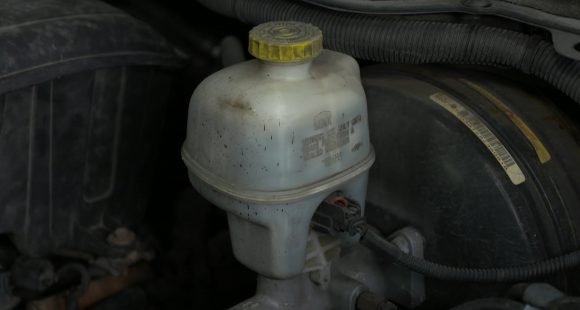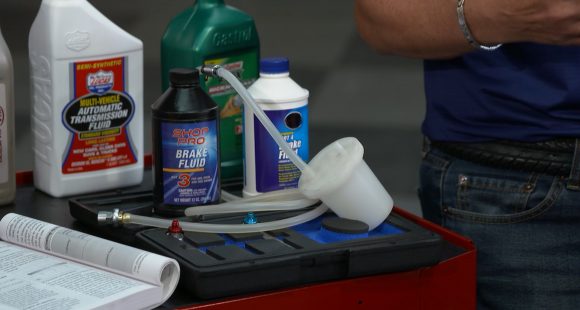Fluids & Flushing
We all know our vehicles depend on sophisticated fluids in order to stay running right, and we also know that those fluids need a thorough flushing eventually; but when and how? Well, Audra Fordin syphons out the answers on MotorWeek’s “Your Drive.”
AUDRA FORDIN: The list of vital fluids found in your vehicle is a long one. Instead of showing you how to replace each one, I want review some of the fluids you need to keep in mind and how often you need to replace them.
Just about everyone knows you need to replace your motor oil on a regular basis. Well, we’ve shown you how to replace motor oil before, so instead I want to talk about frequency. The rule of thumb used to be every 3,000 miles, but now with synthetic motor oil, we’re seeing 5,000 and even 10,000 mile intervals. I personally recommend doing it every 5,000 miles, but like almost every maintenance-related thing, check your owner’s manual to be sure.
And now, let’s talk about some of the forgotten fluids, like your coolant, your brake fluid, transmission fluid and differential. Starting under the hood…
You can typically refill your engine coolant right here at the plastic reservoir. Same with your brake fluid. What you need to know is that the systems are in sealed units, so you should not need to top them off. If you do see the fluid is low, follow the embossed maximum line on the reservoir container to make sure to not overfill, and do be sure to check for leaks. A simple top off of fluid is one thing, but a full flush of either system will require a proper bleeding. Bleeding is when we remove pockets of trapped air from the flushed system. Now you can imagine why this is so important. Air in your coolant lines can make your engine overheat. Air in your brake lines gives them less stopping power: A spongy feel to the brakes, and in some cases, you could actually lose your brake pedal because the air compresses and transfers less energy to the calipers at each wheel. You know, in the case of your brakes, you could consider using a bleeder tool like this. You’re going to add fluid, open the bleeder valve, pump the brakes, and repeat until there are no air bubbles left in the hose.
Moving underneath the car, two of the big fluids to consider are transmission and differential. Over time, the fluid inside the system starts to pick up debris and it also breaks down from the heat, which is affecting its ability to keep things running smoothly. Some manuals say to replace the fluid at fifty thousand miles, while some recommend up to one hundred thousand miles. Follow specifications in your manual. For the transmission, this frequency can depend on whether you drive a manual or an automatic; or if you’re hauling or towing a heavy load; and this will also determine which fluid you’re going to use. Now, unlike some of the other parts we talked about, a transmission flush often requires a special pump, like this, where you will remove the fluid and then pump it back into the unit.
Differentials, well, they’re a little less tricky. They typically have an inlet and an outlet plug. Just drain from the bottom, fill the top, and then you are good to go. Word to the wise: before you swap any fluids on your car, make sure you can remove the refill plug. Not only does this help flow, but it guarantees you’ll be able to put in more fluid. New fluid is better than used fluid, but used fluid is better than no fluid.
If you have any questions or comments, reach out to us, right here at MotorWeek.
















